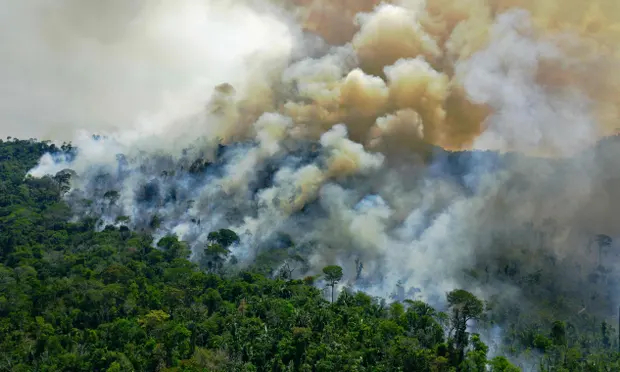The research, published in the journal Nature, involved taking 600 vertical profiles of CO2 and carbon monoxide, which is produced by the fires, at four sites in the Brazilian Amazon from 2010 to 2018. It found fires produced about 1.5bn tonnes of CO2 a year, with forest growth removing 0.5bn tonnes. The 1bn tonnes left in the atmosphere is equivalent to the annual emissions of Japan, the world’s fifth-biggest polluter.
“This is a truly impressive study,” said Prof Simon Lewis, from University College London. “Flying every two weeks and keeping consistent laboratory measurements for nine years is an amazing feat.”
“The positive feedback, where deforestation and climate change drive a release of carbon from the remaining forest that reinforces additional warming and more carbon loss is what scientists have feared would happen,” he said. “Now we have good evidence this is happening. The south-east Amazon sink-to-source story is yet another stark warning that climate impacts are accelerating.”
Prof Scott Denning, at Colorado State University, said the aerial research campaign was heroic. “In the south-east, the forest is no longer growing faster than it’s dying. This is bad – having the most productive carbon absorber on the planet switch from a sink to a source means we have to eliminate fossil fuels faster than we thought.”
A satellite study published in April found the Brazilian Amazon released nearly 20% more carbon dioxide into the atmosphere over the past decade than it absorbed. Research that tracked 300,000 trees over 30 years, published in 2020, showed tropical forests were taking up less CO2 than before. Denning said: “They’re complementary studies with radically different methods that come to very similar conclusions.”
“Imagine if we could prohibit fires in the Amazon – it could be a carbon sink,” said Gatti. “But we are doing the opposite – we are accelerating climate change.”
“The worst part is we don’t use science to make decisions,” she said. “People think that converting more land to agriculture will mean more productivity, but in fact we lose productivity because of the negative impact on rain.”
Research published on Friday estimated that Brazil’s soy industry loses $3.5bn a year due to the immediate spike in extreme heat that follows forest destruction.
